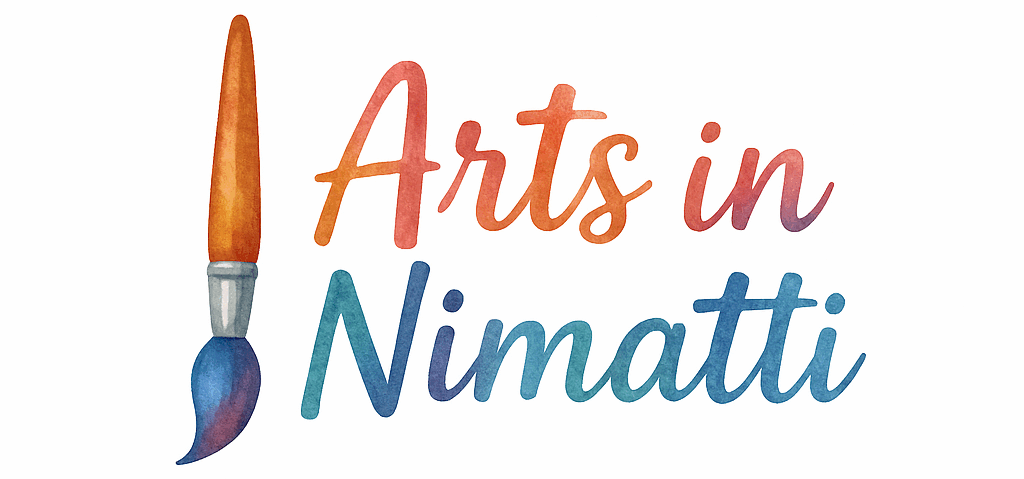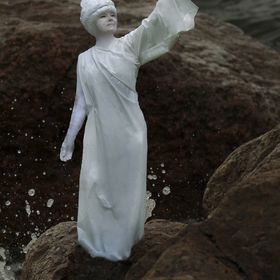Art is a language in itself, filled with rich terminology that helps artists communicate their ideas, techniques, and inspirations. If you are a beginner venturing into the world of art, understanding these key art vocabulary words can make your journey more enjoyable and insightful. Whether you’re exploring art education, enhancing your art techniques, or just diving into the vibrant world of creativity, learning these foundational terms is crucial. In this post, we’ll explore 12 essential art vocabulary words that every beginner should know.
1. Medium
In the context of art, medium refers to the materials used by an artist to create a work. It could range from traditional oils and watercolors to more unconventional mediums like digital tools or found objects. The medium plays a significant role in both the look and feel of an artwork.
- Examples: Acrylics, oil paints, charcoal, digital media, and sculpture materials.
Understanding the medium helps you decide the best materials for your art portfolio and allows you to explore diverse artistic forms.
2. Composition
Composition is the arrangement of visual elements in an artwork. This term deals with how the artist organizes shapes, lines, colors, and textures to create harmony and balance. Good composition is essential in creating an artwork that draws the viewer’s attention.
- Tip: Use the rule of thirds, a principle that suggests dividing your canvas into nine equal parts and placing focal points along these lines.
A solid grasp of composition will also aid you in improving your art productivity, as it brings structure to your creative process.
3. Contrast
Contrast refers to the difference between elements in an artwork, such as light versus dark, soft versus hard, or smooth versus rough. Using contrast effectively can highlight focal points, add depth, and create a more dynamic composition.
- Example: A brightly colored object against a dark background stands out due to the contrast between the two.
Contrast plays a significant role in enhancing the mood and emotion of your work, which you might explore further on topics like artist lifestyle.
4. Palette
A palette refers to both the physical board where an artist arranges their paints and the specific range of colors used in a piece of art. The color palette is essential in setting the tone and mood of the artwork, and understanding how to mix colors is a critical skill for any artist.
- Tip: A limited color palette can create a cohesive and harmonious piece.
By refining your palette, you’ll better understand how to create mood, which is key when exploring art techniques.
5. Texture
Texture refers to the surface quality of an artwork, which can be either visual (how it looks) or tactile (how it feels). Texture can be created through brush strokes, layering materials, or by adding three-dimensional elements to a painting or sculpture.
- Example: Thick, impasto paint creates a rough texture, while smooth watercolor gives a soft, gentle texture.
Artists experimenting with texture often develop creative habits that allow them to express their ideas in unique ways.
6. Perspective
Perspective is a technique that creates the illusion of depth and space on a flat surface. By adjusting the size, color, and placement of objects, artists can make their 2D works appear three-dimensional. There are several types of perspective, such as linear perspective, atmospheric perspective, and more.
- Tip: The vanishing point is where all lines converge in linear perspective, creating depth.
Mastering perspective will improve your ability to create realistic works, and you can delve deeper into this skill in our art tutorials.

7. Hue
Hue refers to the color itself (red, blue, yellow, etc.). It’s the term that defines the basic color, which can be altered by adding white, black, or gray to change its value and intensity.
- Example: The hue of a color might be a pure red, but adding black would create a darker tone.
Learning how to manipulate hue is crucial for mastering color theory, which directly ties into effective art techniques.
8. Value
In art, value refers to the lightness or darkness of a color. A strong understanding of value is crucial for creating depth, shadows, and highlights in your artwork.
- Tip: Use a range of values in your work to create a realistic sense of light and dimension.
For a deeper dive into how value affects your art, check out our post on art techniques.
9. Line
A line is a basic element of art that defines the shape or contour of an object. It can be thick or thin, straight or curved, and it helps create structure within an artwork. Lines can also suggest movement or direction.
- Example: A wavy line might suggest fluidity, while a jagged line could express tension or chaos.
Mastering the use of line will also aid in developing your art portfolio as you experiment with different styles and concepts.
10. Balance
Balance in art refers to the distribution of visual weight in a piece. It can be achieved symmetrically, asymmetrically, or radially. A well-balanced artwork feels stable and harmonious.
- Example: Symmetrical balance involves placing similar elements on both sides of the composition, while asymmetry involves balancing visual weight in a more dynamic way.
Understanding balance is essential in creating effective compositions, an area that links closely with art business for those looking to market their work successfully.
11. Contrast
Contrast refers to the degree of difference between two elements within a work of art. Contrast can refer to color, texture, size, or shape, and it creates visual interest.
- Example: A large, bold shape next to a small, delicate line creates contrast.
The concept of contrast is often explored further in art history, as it has evolved throughout various art movements.
12. Brushwork
Brushwork refers to the technique an artist uses to apply paint to the canvas. Different brush techniques can create a range of effects, from smooth and even to rough and textured.
- Example: Impressionist artists often used short, thick brushstrokes to capture the essence of light and color.
As you refine your brushwork, you’ll develop your unique artistic style, which will be helpful in both art business and selling your work online through ecommerce.
Conclusion
Understanding and using these 12 essential art vocabulary words is just the beginning of your creative journey. Whether you’re an aspiring artist or a seasoned professional, mastering these terms will help you communicate your ideas more effectively, whether you’re discussing your artist lifestyle, developing your art portfolio, or selling your work through online art sales. Start practicing these terms today, and you’ll find yourself growing as an artist, embracing more advanced techniques, and confidently navigating the art world.
FAQs
- What is the best way to start learning art vocabulary? Begin by familiarizing yourself with the basic terms used in art classes, exploring art history, and practicing different techniques.
- How can understanding art vocabulary improve my artwork? Knowing art vocabulary helps you communicate your creative ideas clearly and understand artistic concepts more deeply.
- Where can I find resources to improve my art techniques? There are plenty of online platforms offering art tutorials and educational content to refine your skills.
- What’s the difference between hue and value in art? Hue refers to the basic color, while value refers to how light or dark that color appears in your artwork.
- How can I improve my brushwork? Practice different brushstroke techniques and experiment with various brush sizes and types to enhance your art portfolio.
- Is there a specific palette I should use as a beginner artist? It’s advisable to start with a limited color palette to understand color mixing and balance. Gradually expand it as you gain more experience.
- What are some tips for balancing elements in a composition? Play around with symmetrical and asymmetrical balance, and ensure that no one part of the artwork feels too heavy or too light.

